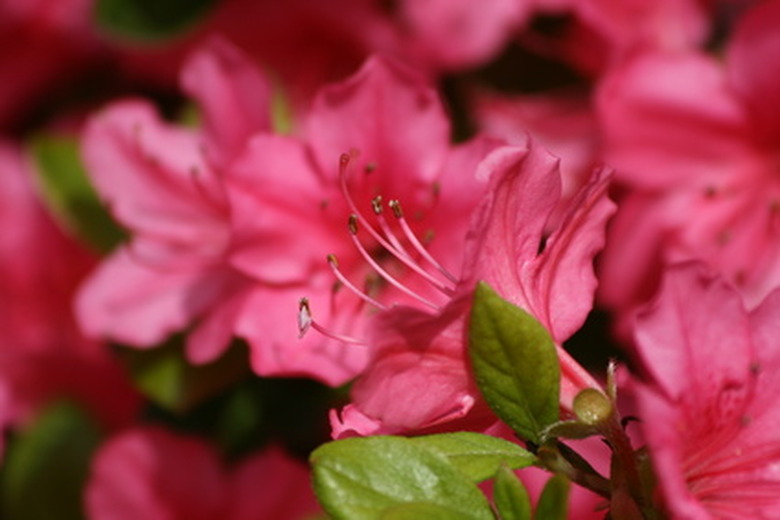Black Spots On Azalea Leaves
Black spots on the foliage of the azalea shrub often indicates a pest infestation. Both the azalea whitefly (Pealius azaleae) and the azalea lace wing (Stephanitis pyrioides) feed on the sap of the shrub by piercing its foliage with their sharp mouths and sucking the nutrients. The azalea whitefly prefers the snow azalea (Azalea ledifolia alba) but does occur on other varieties.
Step 1
The nymphs of the Azalea whitefly excrete a honeydew-like substance on the lower leaves. The honeydew eventually grows a black sooty mold as the insect infestation becomes severe. The leaves appear distorted and cupped. The foliage may wilt and turn yellow over time. The nymphs congregate on the underside of the leaves, appearing as yellow-white, flat-bodied insects. The appearance of the adult whitefly is a small rapidly flying moth-like insect. When the branches of the azalea shrub are shaken, the insects will fly off the stems but the nymphs will remain.
Step 2
- The nymphs of the Azalea whitefly excrete a honeydew-like substance on the lower leaves.
Azalea Whitefly Control
Step 1
During the early spring months the adult azalea whitefly lays its eggs on the underside of the shrub's leaves. The eggs appear as tiny yellow clusters. Applying insecticidal soaps or horticultural oil sprays to the underside of the foliage can help control light to moderate infestations. If the infestation is heavy, consider using a residual insecticide to gain control. Follow the directions on the insecticide's label for application.
Azalea Lace Bug Appearance and Damage
Step 1
The azalea lace bug lays its eggs along the leaf's margins. The hatching nymphs appear dark with tiny black spines. They will go through five molts as they grow in size. The insects' heavy feeding causes the foliage to appear silvery or yellow in with a striped appearance. The underside of the leaves sport black spots from the insects' abundant fecal matter. Azaleas planted in the sun often suffer the greatest damage from the azalea lace wing.
Step 2
- During the early spring months the adult azalea whitefly lays its eggs on the underside of the shrub's leaves.
- The insects' heavy feeding causes the foliage to appear silvery or yellow in with a striped appearance.
Azalea Lace Bug Control
Step 1
Consider planting the azalea in a shady location where the azalea lace bug will be more susceptible to predatory insects, according to the University of Florida IFAS Extension. Hosing the azalea shrub off with a strong jet of water can help control a light infestation. During the spring, use horticultural oils, insecticidal soaps or insecticide sprays to control the insects. Systemic insecticides also work to control the insects if applied in the spring.
